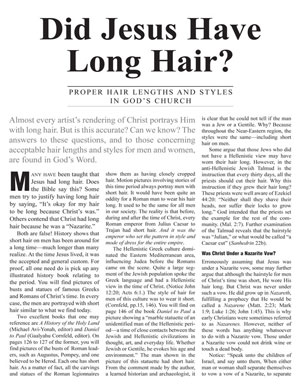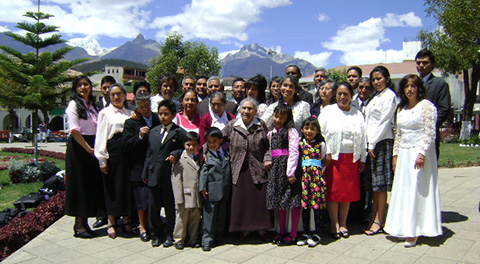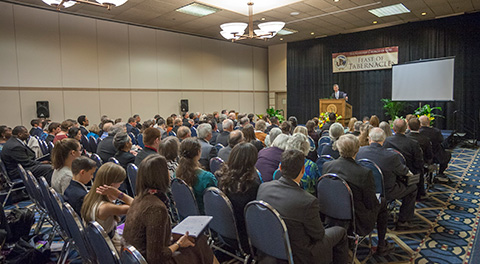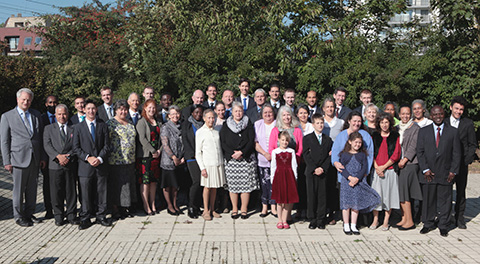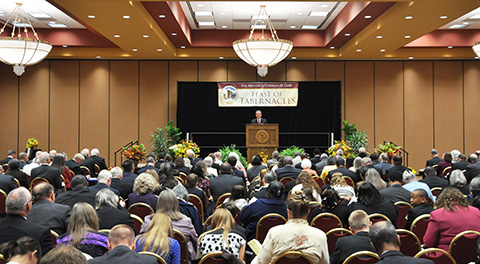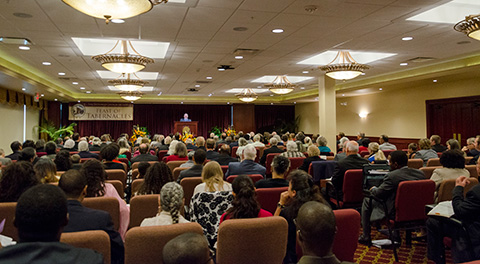Many have been taught that Jesus had long hair. Does the Bible say this? Some men try to justify having long hair by saying, “It’s okay for my hair to be long because Christ’s was.” Others contend that Christ had long hair because he was a “Nazarite.”
Both are false! History shows that short hair on men has been around for a long time—much longer than many realize. At the time Jesus lived, it was the accepted and general custom. For proof, all one need do is pick up any illustrated history book relating to the period. You will find pictures of busts and statues of famous Greeks and Romans of Christ’s time. In every case, the men are portrayed with short hair similar to what we find today.
Two excellent books that one may reference are A History of the Holy Land (Michael Avi-Yonah, editor) and Daniel to Paul (Gaalyahu Cornfeld, editor). On pages 126 to 127 of the former, you will find pictures of the busts of Roman leaders, such as Augustus, Pompey, and one believed to be Herod. Each one has short hair. As a matter of fact, all the carvings and statues of the Roman legionnaires show them as having closely cropped hair. Motion pictures involving stories of this time period always portray men with short hair. It would have been quite an oddity for a Roman man to wear his hair long. It used to be the same for all men in our society. The reality is that before, during and after the time of Christ, every Roman emperor from Julius Caesar to Trajan had short hair. And it was the emperor who set the pattern in style and mode of dress for the entire empire.
The Hellenistic Greek culture dominated the Eastern Mediterranean area, influencing Judea before the Romans came on the scene. Quite a large segment of the Jewish population spoke the Greek language and had a Hellenistic view in the time of Christ. (Notice John 12:20; Acts 6:1.) The style of hair for men of this culture was to wear it short. (Cornfeld, pp.15, 146). You will find on page 146 of the book Daniel to Paul a picture showing a “marble statuette of an unidentified man of the Hellenistic period—a time of close contacts between the Jewish and Hellenistic civilizations in thought, art, and everyday life. Whether Jewish or Gentile, he evokes his age and environment.” The man shown in the picture of this statuette had short hair. From the comment made by the author, a learned historian and archaeologist, it is clear that he could not tell if the man was a Jew or a Gentile. Why? Because throughout the Near-Eastern region, the styles were the same—including short hair on men.
Some argue that those Jews who did not have a Hellenistic view may have worn their hair long. However, in the anti-Hellenistic Jewish Talmud is the instruction that every thirty days, all the priests should cut their hair. Why this instruction if they grew their hair long? These priests were well aware of Ezekiel 44:20: “Neither shall they shave their heads, nor suffer their locks to grow long.” God intended that the priests set the example for the rest of the community. (Mal. 2:7). Further examination of the Talmud reveals that the hairstyle was “Julian,” or what would be called “a Caesar cut” (Sanhedrin 22b).
Was Christ Under a Nazarite Vow?
Erroneously assuming that Jesus was under a Nazarite vow, some may further argue that although the hairstyle for men of Christ’s time was short, He wore His hair long. But Christ was never under such a vow. He did grow up in Nazareth, fulfilling a prophecy that He would be called a Nazarene (Matt. 2:23; Mark 1:9; Luke 1:26; John 1:45). This is why early Christians were sometimes referred to as Nazarenes. However, neither of these words has anything whatsoever to do with a Nazarite vow. Those under a Nazarite vow could not drink wine or touch a dead body.
Notice: “Speak unto the children of Israel, and say unto them, When either man or woman shall separate themselves to vow a vow of a Nazarite, to separate themselves unto the Lord: He shall separate himself from wine and strong drink, and shall drink no vinegar of wine, or vinegar of strong drink, neither shall he drink any liquor of grapes, nor eat moist grapes, or dried. All the days that he separates himself unto the Lord he shall come at [touch] no dead body” (Num. 6:2-3, 6).
Christ drank wine (Matt. 11:19) and, on occasion, touched a dead body (Matt. 9:25). Had He been under a Nazarite vow, He would not have done either of these things. Those under this vow grew their hair long as a sign of humiliation. Men who wear their hair long today are anything but humble. Rather, they are very proud of their long locks and go to great lengths to show them off. It is a sign of pride. It is also a sign of defiance against traditional values.
Also notice that when the time of the vow was over, the person under the vow was to shave his head (Num. 6:18)—ending this shameful period!
How do we know it was a shameful time? I Corinthians states, “Does not even nature [the inborn quality of a man as contrasted to that of a woman] itself teach you, that, if a man have long hair, it is a shame unto him?” (11:14).
It is a shame for a man to have his hair long. Apart from God’s Word, even nature shows this. A man should not look like a woman! For one thing, long hair is not manageable and would just get in his way. A man’s hair was never intended to grow long. Long hair on a man interferes with the duties and responsibilities that are part of the male role.
Christ simply would not have grown His hair long. To do so would have contradicted His Word. Remember, it was Christ—the Word (John 1:1)—who inspired the Bible. II Timothy tells us, “All Scripture is given by inspiration of God, and is profitable for doctrine, for reproof, for correction, for instruction in righteousness” (3:16). And since Jesus Christ also inspired I Corinthians 11:14, He would have been true to His word. And that Word guides and instructs us on the matter of hair lengths and styles for men and women.
What Christ Did Look Like
The Second Commandment clearly prohibits any artist’s rendering of what Christ may have looked like: “You shall not make unto yourself any graven image or any likeness of any thing that is in heaven above, or that is in the earth beneath, or that is in the water under the earth” (Ex. 20:4).
Almost all artists’ renderings portray Jesus with long hair, soft, feminine—if not effeminate—features, and a sentimental, sanctimonious look in His eyes. They bear no similarity in any way to what Christ really looked like.
The Christ of your Bible did not look like this! If it were important for us to know exactly what He looked like as a man, it would have been recorded.
In fact, nowhere in God’s Word are we told to be concerned with what Christ looked like as a human being. The only description we are given is this: “For He shall grow up before Him as a tender plant, and as a root out of a dry ground: He has no form nor comeliness; and when we shall see Him, there is no beauty that we should desire Him” (Isa. 53:2).
Jesus would have looked like any other Jewish man of His time. He would have been a normal, healthy, masculine-looking man. As a carpenter, He spent most of His life working outdoors (Mark 6:3). He did not look like an effeminate weakling—with long hair!
Christ had short hair, like a man should have. And it would have been neatly trimmed and kept. As the Son of God, Jesus always set the right example.
On a number of occasions, He was able to blend into a crowd because He looked just like everyone else (Luke 4:30; John 8:59; 10:39). Think! If Jesus had had long hair, contrary to the accepted style of the time, it would not have been necessary for Judas to use a special sign—a kiss—to point Him out to His enemies. Christ would have stood out from the crowd!
Ultimately, if we think about Christ’s appearance at all, we ought to think, in general terms, about how He looks today. Inspired by God, the apostle John described Jesus’ present appearance: “His head and His hairs were white like wool, as white as snow; and His eyes were as a flame of fire” (Rev. 1:14).
Still, some may ask about two passages in the book of Leviticus that seem to prohibit the cutting of one’s hair. They read, “You shall not round the corners of your heads, neither shall you mar the corners of your beard” (Lev. 19:27); and “They shall not make baldness upon their head, neither shall they shave off the corner of their beard, nor make any cuttings in their flesh” (21:5).
A casual reading of these passages seems to imply that it is wrong to shave or cut one’s hair. However, this is not the case. Reading from the American Translation by Goodspeed helps one to understand the true meaning of these verses: “You must not shave around your temple, nor do away with the corners of your beard” and “They must not shave part of their heads bald, nor shave off the corners of their beards, nor make incisions in their bodies.” Recognize that this was instruction to the nation of Israel after they had come out of Egypt. For centuries, they had not known the true God or His ways. The only way of life they had been exposed to was the pagan culture of Egypt, with its multitude of false gods.
Notice this admonition in Jeremiah 10:2: “Thus says the Lord, Learn not the way of the heathen.” The ancient Israelites had undoubtedly learned some of Egypt’s ways, necessitating that God instruct them in His ways.
It was a ceremonial custom of the heathen to cut and trim beards and hair into special shapes that would honor a particular pagan deity—often the sun god. The Egyptians of old cropped their dark locks very short. Or they shaved it precisely, leaving the remaining hair on the crown, forming a circle that surrounded the head (the halo has been borrowed from this practice), while they dressed their beards in a square form. Conversely, a round bald spot may have been shaved on the head.
Again, this practice was intended to honor a pagan god. Doing these things does not honor the true God. The Bible forbids this kind of worship.
Many males (and some females) today are adopting hairstyles borrowed from: Pagan cultures; rebellious skinhead movements (shaving their heads bald); modern religious/cultural movements (such as Rastafarian); famous rock groups and other artists; and any number of other shocking, outlandish styles and fashions.
Those in God’s Church must not copy the ways of this world. We are to “come out from among them, and be… separate” (II Cor. 6:17). Christ left His people an example to follow (I Pet. 2:21). This rules out worldly hairstyles for men, such as braids, ponytails and dreadlocks.
Certainly, shaving one’s beard and cutting one’s hair for normal good grooming, in a way that honors God and is acceptable to Him, is something entirely different. This is not condemned but rather enforced by the scriptures. In general terms, a male’s hair should not cover his ears or reach to the shirt collar. It should be worn in a clean, well-kept way. (There is also another reason that a male should not shave off his sideburns. Doing this also makes him appear feminine).
A Woman’s Hair Is Her Covering
The Bible states that “If a woman have long hair, it is a glory to her: for her hair is given her for a covering” (I Cor. 11:15). Two points emerge from this verse.
First, something that is a “glory” should be given special attention and care. A woman’s hair ought to be well groomed and worn in a clean, tasteful, attractive manner. If neglected, hair will quickly become a matted, tangled, unattractive mess!
Yet, a woman should be mindful of modesty and tastefulness. She should not draw undue attention to herself. Vanity will lead some to extremes, which is certainly not the will of God.
We find these instructions in I Timothy: “In like manner also, that women adorn themselves in modest apparel, with shamefacedness and sobriety; not with braided hair, or gold, or pearls, or costly array. But (which becomes women professing godliness) with good works” (2:9-10).
Also read I Peter 3:3-5: “Whose adorning let it not be that outward adorning of plaiting the hair, and of wearing of gold, or of putting on of apparel; But let it be the hidden man of the heart, in that which is not corruptible, even the ornament of a meek and quiet spirit, which is in the sight of God of great price. For after this manner in the old time the holy women also, who trusted in God, adorned themselves, being in subjection unto their own husbands.”
The “braided hair, or gold or pearls” that Paul refers to was a popular style of his day. Women piled their hair in an overdone, immodest, flashy, sometimes outlandish set of braids interwoven with expensive jewelry. Often, it included wreaths woven in. This was obviously a showy display, motivated by vanity. Women in God’s Church must avoid these kinds of extremes. God’s Word teaches that a Christian must exemplify modesty and discretion. God’s principle is that real beauty comes from within.
Second, a woman’s hair is her “covering.” It can only be considered a covering if it is long enough to do this. In I Corinthians 11:2-16, Paul is primarily explaining the hair lengths for women. He describes four different lengths: Covered (long hair); not covered (short hair); shorn (very short hair); and shaved (bald).
Notice verses 5 and 6: “But every woman that prays or prophesies with her head uncovered dishonors her head: for that is even all one as if she were shaven. For if the woman be not covered, let her also be shorn: but if it be a shame for a woman to be shorn or shaven, let her be covered.” Paul is saying that if a woman’s hair is not long enough to cover her head, it is the same as if her hair was cut very short or if she was shaved bald! For women, there is no difference between uncovered, shorn and shaven!
So if a woman wears her hair in any of these ways, it is shameful and a dishonor to her, and unacceptable to God. And because it is shameful for a woman to have short or shaved hair, it needs to be long enough to be a covering.
There is another reason a woman’s hair should be long: “For a man indeed ought not to cover his head [have long hair], forasmuch as he is the image and glory of God: but the woman is the glory of the man. For the man is not of the woman; but the woman of the man. Neither was the man created for the woman; but the woman for the man. For this cause ought the woman to have power [long hair showing she is under authority] on her head because of the angels” (I Cor. 11:7-10).
When a woman has long hair, it shows that she is under authority and in submission to her husband. The phrase “because of the angels” shows that when a woman “uncovers” her head, she loses angelic protection. That is serious!
Then comes verse 15: “But if a woman have long hair, it is a glory to her: for her hair is given her for a covering.”
But how long does a woman’s hair need to be in order for it to be a “covering”? The word cover provides the answer. A woman’s hair must cover her ears and neck to be considered a “covering.” (However, this is not to say that it cannot be worn up in a way that does not always cover her ears and neck.) This is because these are the first two features of the head to be covered as hair grows significantly longer.
Most lengths are appropriate if long enough to be a covering and if the way one’s hair grows is taken into consideration. Most styles are acceptable as long as they are clean-looking, in good taste, modest and feminine-looking.
It Does Matter!
How we look and appear before the great Creator God is important! How we as God’s children wear our hair does matter. If we are true Christians, then we are one of the few lights in this dark world (Matt. 5:14). How we wear our hair shows what kind of light we are!
In contrast to this mixed up, messed up world, men in God’s Church should look like men, and women in the Church should look like women—as God always intended! We are to come out of the world—not follow after it, copy it or be a part of it.
As true Christians we should never appear strange or outlandish in actions, attire or the way we wear our hair. Instead, our whole attitude should be one of modesty, humility, submission and service to God.



